Anti-tank gun PAW 600 / 8H63 (Germany)
Understanding the existing problems led to the fact that in 1943 the German command issued a new technical task for a promising anti-tank gun. This system was supposed to be lightweight and reduced cost, but at the same time show sufficient technical and combat characteristics. The customer wanted a gun capable of falling into a 750x1 m square from a distance of 1 m and penetrating armor of at least medium tanks the adversary.
Soon, its concept of a promising cannon, meeting the specific requirements of the army, was proposed by Rheinmetall-Borsig. Her project included the simultaneous use of already known and completely new ideas. The proposed combination of solutions made it possible to minimize the size and mass of the gun while obtaining sufficiently high characteristics in the context of fighting tanks and unprotected targets.
A new anti-tank weapon - both during the development and after the start of mass production - managed to get several names at once. At the design stage, the working designation Panzerabwehrwerfer 600 (PAW 600) was used, defining a new product as an anti-tank launcher. Later, the gun was adopted with the official designation 8 cm Panzerwurfkanone 8H63 (8-cm anti-tank gun-launcher type 8H63). In modern materials, all known project names are used in parallel and on equal terms.
The main method of reducing the mass of the structure, according to the designers of Rheinmetall-Borzig, was to simplify the design of the trunk using the principle of low pressure. Lightweight barrel with lower wall strength could not withstand the high pressure in the channel. As a result, the kinetic method of defeating an armored target was excluded, and the gun had to use cumulative ammunition. At the same time for the acceleration of the projectile was proposed to apply the Hoch-Niederdruk system, which provided for the presence of two chambers with different pressures.
The desired combat characteristics could be obtained only with the help of cumulative ammunition. In order to simplify some of the work and save on mass production, the 8H63 projectile was decided to be made on the basis of the existing 81-mm mortar mine. Mines without modifications borrowed a perforated tubular shank with plumage. The body now had a different shape with a recycled head and a modified curvature of the surfaces. The resulting ammunition weighed 3,75 kg with a mass of explosive 2,7 kg. The cumulative charge punched up to 143 mm homogeneous armor. Armor-piercing ammunition was designated as Pwk.Gr.5071.
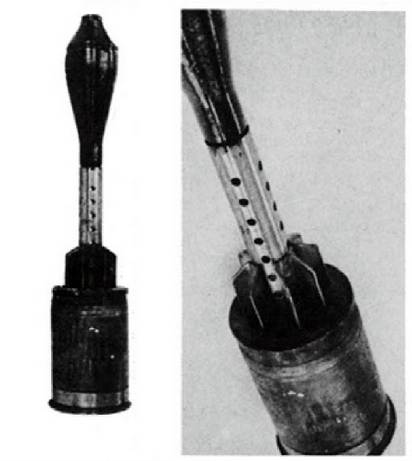
Shot Wgr.Patr.4462 with a cumulative projectile Pwk.Gr. 5071. Photo Strangernn.livejournal.com
Together with the cumulative projectile Pwk.Gr. 5071 proposed to use the original sleeve with a propelling charge. This product had a cylindrical body, the upper end of which was covered by a relatively thick metal plate with eight openings closed by metal membranes. Inside was placed 360 g of gunpowder. It was the correct design of the liner that was supposed to create the required pressure in the barrel bore. The sleeve is rigidly connected with the projectile. Such a unitary shot for the new gun received the official designation Wgr.Patr. 4462.
Since the armor-piercing ammunition was based on the construction of 81-mm mines, the PAW 600 can also use existing mortar shells. To solve various problems, the calculation could charge the high-explosive fragmentation, smoke or other mines of available types. In all cases, the same propellant charge was used.
In terms of overall architecture and layout, the future 8H63 cannon should have a significant resemblance to existing anti-tank guns. The body of the gun, consisting of the barrel, bolt and some other parts, was to be mounted on a carriage with guidance mechanisms and shield shield. This carriage had a fairly simple design and was based on existing products. It was based on a small platform on which the U-shaped support of the gun was mounted. The latter was completed with manual drives that provided horizontal guidance within a sector of 55 ° width with elevation angles from -6 ° to + 32 °. Hydropneumatic anti-recoil devices were used. Before the support was fixed polygonal armor shield. The main platform of the mast had axles for mounting a pair of wheels and hinges for two tubular beds. The latter were equipped with coulters and had to transmit a recoil momentum to the ground.
The PAW 600 / 8H63 cannon has a smooth thin-walled barrel with a length of 3032 mm (38 gauges). To reduce the recoil momentum and reduce the requirements for the gun carriage, the barrel was equipped with a muzzle brake and was also installed on hydropneumatic recoil devices. The breech barrel was equipped with a vertical wedge bolt with semi-automatic mechanisms. A characteristic feature of the breech breech was an unusually shaped chamber. Its front part, which contained the shell, had a channel with a diameter of 81 mm. The rear volume intended for a powder charge case was distinguished by its large size. The ledge, which divided the two parts of the chamber, also had to serve as a stop for the front cover of the liner.
A new type of gun was equipped with a sight for direct fire. The gunner was to be to the left of the breech of the gun and move the barrel with hand drives. For his safety, a relatively large protective grid was located to the left of the breech.
The original principle of action and the unusual ammunition significantly facilitated the design of a promising anti-tank gun. The entire artillery system assembly weighed only 640 kg. From the point of view of dimensions, it also favorably differed from the existing instruments of the traditional appearance, which have similar characteristics. Thus, the PAW 600 gun could easily be used to support infantry. Her transfer within the battlefield could be carried out by the forces of calculation, without the need to attract a tractor.
The principle of operation of the 8H63 gun, based on the concept of low pressure in the barrel, is of particular interest. To fire a shot, the calculation should have loaded a unitary shot with the projectile of the required type into the chamber. After closing the shutter gun was ready to fire. When the corresponding lever was pressed, the trigger mechanism initiated the combustion of the powder charge and the generation of gases.
Burning inside the liner, the propellant charge had to create pressure up to 1200 kg / sq. Cm (about 117,7 MPa). This pressure was enough to destroy the membranes in the front cover of the liner. Breaking through the resulting gases, they lost a significant part of their energy. As a result, the pressure in the space between the sleeve and the leading belt of the projectile mines did not exceed 550 kg / sq. Cm (54 MPa). This pressure was sufficient to accelerate the existing projectile to acceptable speeds, but did not impose special requirements on the strength of the barrel. In addition, as the projectile progressed, the pressure in the barrel bore almost did not change, ensuring uniform acceleration. The initial speed of the anti-tank cumulative shot was 520 m / s. In flight, the ammunition rotated at low speed due to the existing stabilizer.
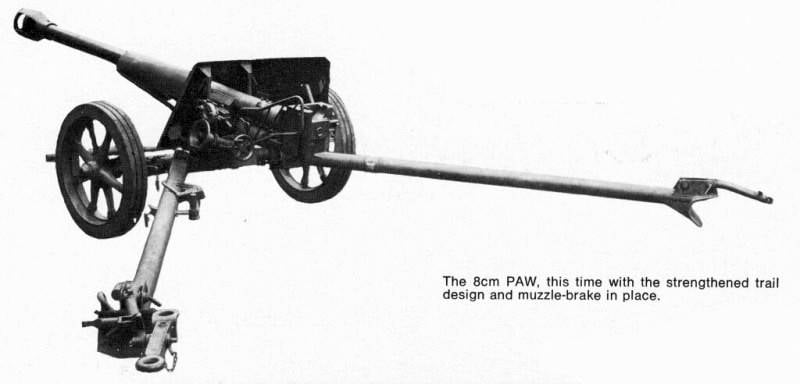
View of the gun from the side of the bed. Photo Strangernn.livejournal.com
The proposed system, which actually consisted of two separate chambers, made it possible to obtain the desired combat characteristics. The gun sent the cumulative projectile to the required 750 m without any problems. By correctly setting the elevation angle of the barrel, it was possible to shoot a fragmentation mine at a distance from the 6200 m.
In 1944, the Panzerabwehrwerfer 600 project reached the stage of ground tests of prototypes. Quickly enough, the prototypes confirmed the design characteristics. In general, the gun looked decent, although there were some problems. The main difficulties arose with shooting accuracy. At the 750 distance, the gun actually hit the target with the size 1x1 m. However, only half of the shells fit into the 70x70 square. See
Low accuracy, due to a relatively low initial speed, inadequate stabilization of the projectile in flight and a relatively high trajectory, was compensated by the power of the shaped charge. Normally, armor penetration in 143 was enough to destroy any existing anti-Hitler coalition tanks. Thus, the advantages of the PAW 600 can still outweigh the characteristic cons.
According to the results of tests, a new weapon was recommended for adoption and mass production. At the end of autumn 1944, an order appeared for the first batch of serial guns and shells for them. The main contractor under this contract was to become the company Rheinmetall-Borsig. The first 8 serial cannons cm Panzerwurfkanone 8H63 and Wgr.Patr shots. 4462 was supposed to get to the end of the year. To reduce the cost of production and speed up the work, it was proposed to use PAK 38 gun carriages and muzzle devices from PAK 40.
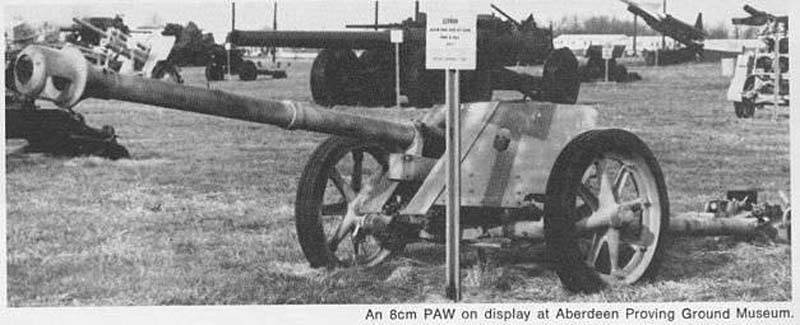
The gun PAW 600 from the exposition of the Aberdeen Museum in the United States. Photo of Wikimedia Commons
At the very beginning of 1945, a new command order was issued that determined the order in which the guns were distributed between units. The PAW 600 / 8H63 cannons were proposed to be reduced to anti-company companies with 12 units each. The companies were attached to larger parts. The number of personnel of such a company - 104 person. It is curious that when creating such units, it was possible to noticeably reduce the required number of fighters in comparison with previous structures while maintaining the necessary combat potential.
In accordance with the plans of the command, the production rate of guns 8H63 had to constantly grow. The goal was to release 1000 guns per month. In parallel, each month should be sent to the troops 4 million anti-tank and 800 thousand high-explosive fragmentation ammunition. Nevertheless, the start of production fell on a difficult period, and the German industry could not even come close to the desired rate of production. So, in December 1944 and January 1945, the customer was handed over the entire 81 gun and several thousand shells. Until the end of the war, they managed to manufacture only 260 guns, of which by the beginning of spring 155 had joined the army.
Quite quickly, a proposal appeared to create self-propelled artillery systems armed with 8H63 guns. The small size and weight allowed to mount such a gun on different chassis used by the German army. Nevertheless, the study of the issues of creating self-propelled guns was seriously delayed. Until the end of the war, German enterprises did not have time to bring the project with the provisional name Kleinpanzerjäger Rütscher at least to field testing. The main success of these works was the construction of a wooden model of ACS.
Since December 1944, the German army has limited use of the new PAW 600 guns in some battles. The few guns could not have a noticeable effect on the course of the fighting. Moreover, the insufficient number of them led to the fact that any exact information about the combat use was simply not preserved. It can be assumed that the calculations of 8H63 did indeed manage to effectively deal with enemy tanks, but there are no specific data on this score. In the current situation, you can only make assumptions and conclusions.
Until the end of the war, the Wehrmacht was able to obtain a small number of promising low-pressure anti-tank guns, which had understandable consequences. The gunners still had to use the guns that were in service, not distinguished by the ease of use and maneuverability on the battlefield. it weapon allowed to attack enemy tanks, but subjected its calculation to increased risks. The new model, designed to save the army from such problems, reached mass production, but did not have a noticeable effect on the situation.
As far as we know, all PAW 600 / 8 cannons cm Panzerwurfkanone 8H63 after the war were disposed of as useless. Several such guns were sent to the landfills of the winning countries for study. It is known that the gun, tested at the Aberdeen Proving Ground of the United States, was subsequently included in the exposition of its museum.
It should be noted that the Panzerabwehrwerfer 600 project was not one of a kind. At the final stage of World War II, German industry developed several low-pressure anti-tank guns. They also did not affect the situation at the front, but nevertheless represent technical and historical interest.
Based on:
http://lexikon-der-wehrmacht.de/
http://militarynavalhistory.net/
https://forum.axishistory.com/
https://strangernn.livejournal.com/
Hogg, Ian V. German Artillery of World War Two. 2nd corrected edition. Mechanicsville, PA: Stackpole Books, 1997

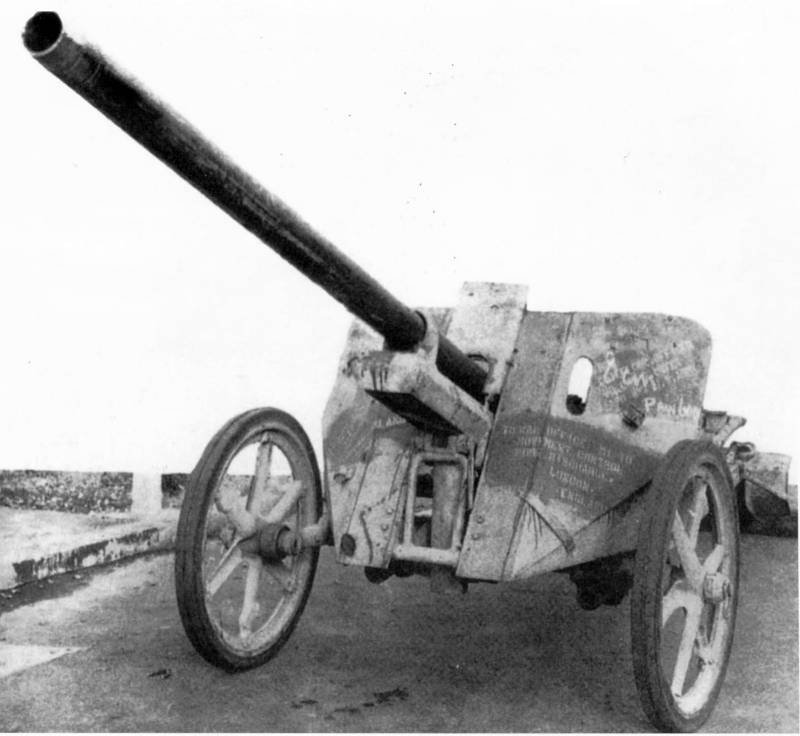
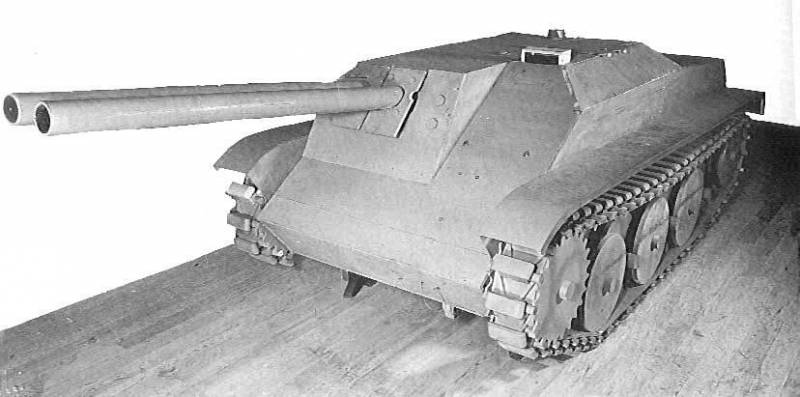
Information